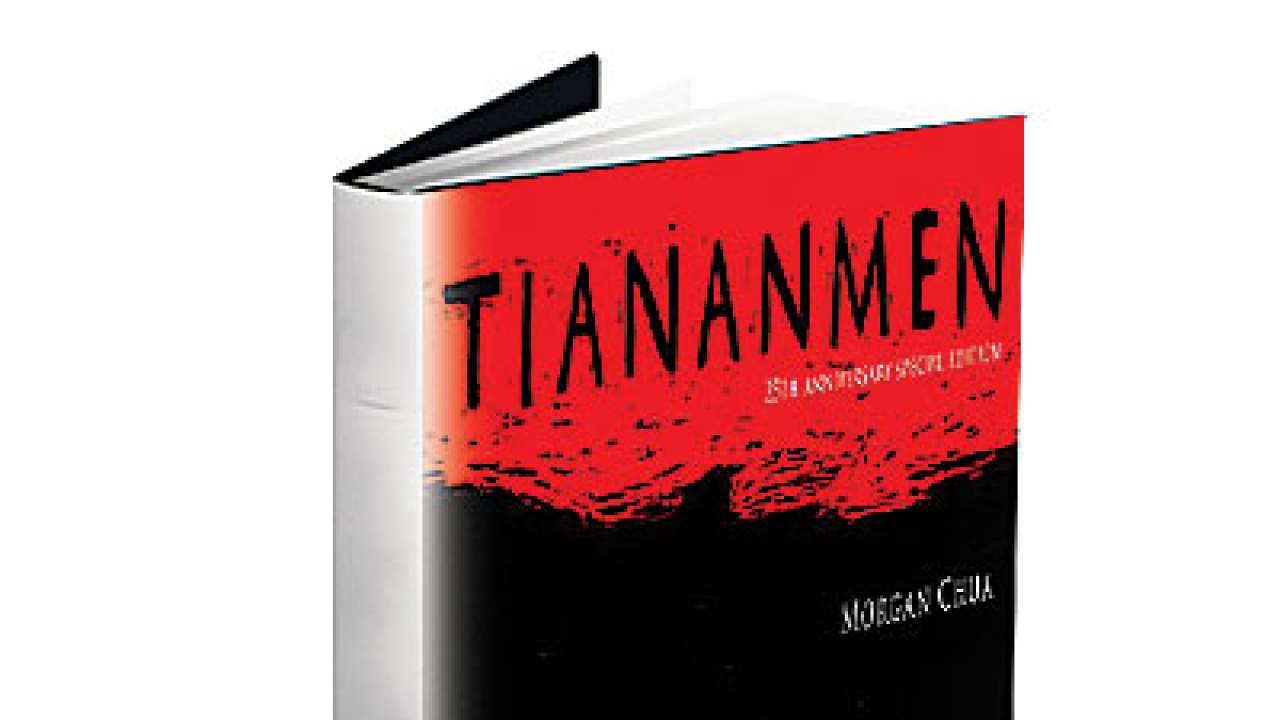
Author: Morgan Chua
Publisher: Navayana
Price: 350
105 pages
On June 4, a quarter century after the Tiananmen Square crackdown in which hundreds of protestors were killed, tens of thousands gathered in Hong Kong's Victoria Park for a candlelight vigil in remembrance.
Across the Shenzhen river in mainland China, Tiananmen was — as it has been for a generation now — an absence in the country's collective consciousness. Media around the world looked back at the three months in 1989 that had shaken the Chinese Communist Party's foundations like nothing since the Cultural Revolution; Chinese state press agency Xinhua's most popular online story, meanwhile, was about Angelina Jolie's first trip to the country to promote a movie.
It's been a gradual process, but the party has exacted an efficient revenge upon the Class of '89. It has made the Tiananmen Square massacre irrelevant. State propaganda, the elision of the entire chapter from official history and a decoupling of political and economic freedoms — ironically enough, prompted in part by the protests — mean that Chinese born after 1989 either lack knowledge of the protests altogether or consider them a matter of academic interest at best. The few who still consider Li Peng's declaration of martial law the beginning of a grand betrayal belong to an earlier generation — activists like Hu Jia, artists like Ai Weiwei and Yan Zhengxue, former student leaders who escaped the government crackdown in '89 like Feng Congde and Wang Dan.
He may have been born in Singapore, but Morgan Chua, author of graphic satire Tiananmen and of Chinese extraction himself, is one of them in some ways.
He is no stranger to taking on the authoritarian state. A cartoonist who started his career with The Singapore Herald in 1970, he displeased Lee Kuan Yew with his work at a time when Lee's government was threatening the newspaper because of its critical line. He subsequently had to leave for Hong Kong in 1971 when the government shut down the paper.
Tiananmen was produced nearly two decades later in the immediate aftermath of the protests and government crackdown in China — this is a 25th anniversary edition with updated information on the principals from both sides. Rooted in the same sensibilities, it covers the months preceding the protests, the standoff and crackdown in Tiananmen Square and the immediate aftermath, but it is not a narrative in the traditional sense. Morgan plays to the strengths of his particular mode of expression. He paints in broad strokes, capturing particular moments along the timeline, skipping sideways and back in time when needed to capture the context, historical and ideological, of the clash; each freeze frame is suffused with the irony that is an editorial cartoonist's stock-in-trade. This is particularly apparent towards the beginning where he uses split panels to set up damning juxtapositions — Mao Zedong in the left square celebrating the formation of the People's Republic of China in 1949 and the right square strewn with dead bodies in the aftermath of the 1989 crackdown, for instance.
That melding of structure and content is particularly effective in conveying the extent of the tragedy. Thus, as the book skips further along the timeline towards the protests and their denouement, Morgan's use of split panels decreases; he shifts to starker, less busy single panels. The net effect is both an increase in the narrative's momentum and a darker tone, culminating in the depiction of the killing of the students in the square — and then, the reintroduction of multiple panels, as if representing the splintering of the protest movement. Throughout, he uses the most potent weapon in a political cartoonist's arsenal — ridicule.
Napoleon is said to have claimed that English caricaturist James Gillray's work targeting him "did more than all the armies in Europe to bring me down". Morgan follows the same principle, from depicting then-President Yang Shangkun as a pig-faced butcher to Deng Xiaoping as a gormless groom skipping away from Democracy, his unwanted bride.
But for all of that, it would be inaccurate to label Tiananmen a work wholly of political cartooning. He might use the tools of the trade, but Morgan — here, at least — lacks the detached eye that is a staple of the business, whether it's RK Laxman with his gently bemused Common Man or David Low skewering Hitler and Mussolini. Morgan is too close to the action, and it shows — from the preface where he writes about his fascination with the land of his ancestors and his anguish at the government crackdown to the panels depicting the killing of the students where that pain is palpable. He has something in common with Ai and Yan there; Tiananmen is as much protest art as it is political cartoon. And it is stronger for it.